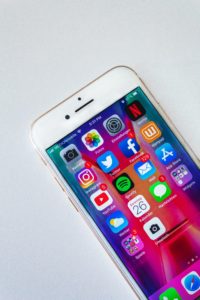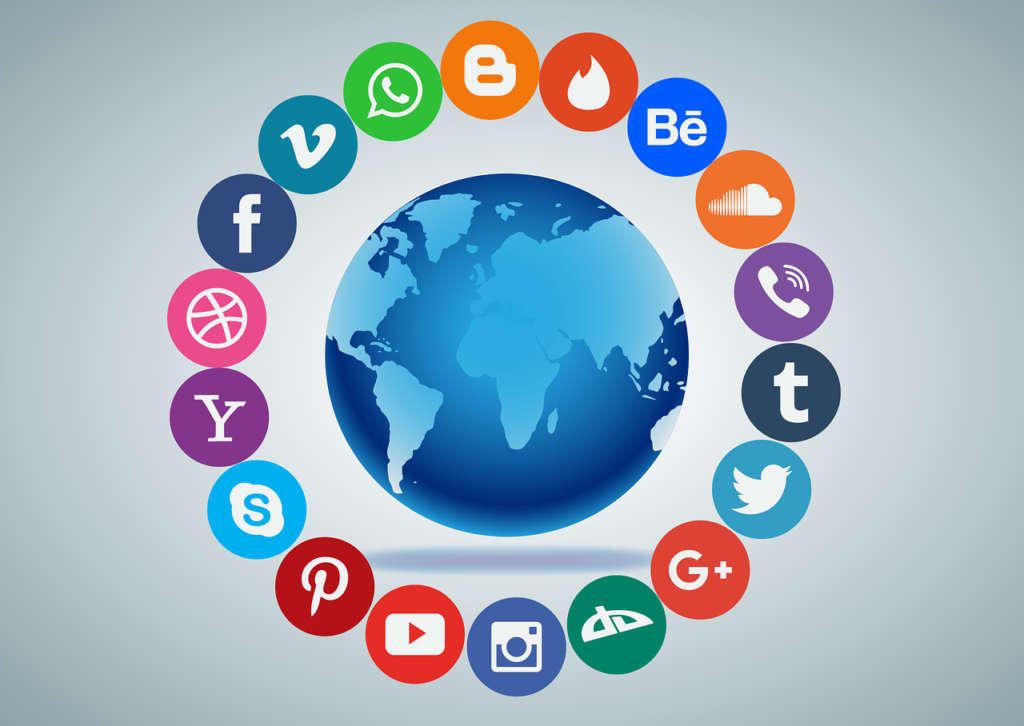Part 3: The Medium
3.1 Do You ‘Like’ It?
Learning Objectives
- To differentiate among core social media platforms and articulate their value in a risk communication campaign.
- To create social media content to communicate an issue of your choosing.
- To revise a social media communication approach based on different target audiences

Social media isn’t just for sharing pictures of cats or food. It can also be a very powerful tool for risk communication. This is because it speaks to two of the big social influences: social proof, which describes how people tend to conform and do what other people are doing; and liking, which describes how people are easily persuaded by people that they like. Using social media appropriately also builds trust and loyalty for an agency/organization.
In 2018, an estimated 68% of Americans obtained their news through social media, highlighting the extent to which social media is used to inform the world around us. As such, social media platforms can provide important exposure for risk communication campaigns. Building exposure is necessary to effect behavioural change and can reach people before they have formed a strong opinion on an issue. Social media also facilitate risk communication because they can be targeted to very specific audiences through the use of hashtags and followers. Further, social media campaigns engage the audience through content sharing, which then promotes the rapid flow of information. While there are a number of popular social media platforms, each has a unique format, which means your communication style and content will need to be adapted for each platform.

Comparing Facebook, Instagram and Twitter
Facebook has the largest potential audience for any message—the site receives over 2.4 billion active users each month, each spending an average of 35 minutes per day. More importantly, 43% of users report that they get their news from Facebook, making Facebook posts a key source of information for many people around the world. Facebook targets all age demographics, and also reaches audiences with limited educational attainment (60% of people in the US without college degrees use Facebook) and those in lower income brackets (66% of people in the US who make less than $30,000 USD/year use Facebook) than other platforms. And while Facebook reaches the largest potential audience, an effective risk communication campaign will have to play the algorithms! Most of the people who see a post will be those already engaged with your account. Engagement rates can improve if you include media (i.e., photos, links, etc) and include catchy text in the first 250 characters (which is all anyone will see when they are scrolling through their Facebook feed unless they click the post). To maximize your reach, consider posting during usage peaks (midweek between 1 – 3pm).
Twitter differs from the other platforms because each post, or “tweet,” is restricted to 280 characters or fewer. You can get around this restriction on characters by tweeting threads of tweets, but if you scroll through Twitter you will quickly see that most often the first tweet in a thread gets the most engagement, with the number of “likes” and “retweets” decreasing with each passing thread. Because of this, it is important to make the first tweet succinct, and as informative and engaging as possible. Twitter also has a large user base with over 125 million daily active users, although the demographic is primarily young adults (40% of people aged 18 – 29 in the US report using Twitter), and users are more likely to have a college education (32% of users reported as attending college vs 13% who didn’t). As compared to Facebook, Twitter tends to also have a greater proportion of users who identify in higher earning brackets (75K USD or more per year). Therefore, it is always important to consider the users of a platform when determining whether this platform will reach your target audience. Twitter is a great platform for messaging the public as tweets can quickly become “viral” or “trending”, and can easily be used to share your message with other groups and journalists who can in turn amplify your message through re-tweeting. Additionally, when using Twitter, be wary when using abbreviations or jargon. While some are helpful to keep a message succinct and under the strict character limit (e.g. writing info instead of information), too many will confound your audience. Finally, unlike Facebook, Twitter posts have a short lifespan meaning that frequent posting is key to having a message reach its audience.
The main draw of Instagram is its use of photo and video sharing, making it the ideal platform for highly visual messages. Instagram stories can also be used to livestream video and respond to audience questions in real time. With one billion monthly active users and 500 million daily users, it is one of the most rapidly growing platforms. Its audience is considerably younger than other platforms (over 50% of users are between 18-29 years old), and tends to have some college education. When using Instagram for your communication campaign, consider posting at the end of a workday (approximately 5pm) and in the early morning before work.
This article provides a helpful summary of the pros and cons of using the most popular social media platforms. It is worth noting that preferences for platforms are constantly changing so a thoughtful social media strategy must maintain awareness of preferred tools for communication. Further, campaigns must be sustained, as it takes months to years in order for messaging to effect change.

Leveraging social media in public health risk communication
In a risk communication campaign, social media can be used to:
- Rapidly and continually capture public mood, sentiment and knowledge about health issues (e.g. using hashtags to collect information on views and misconceptions)
- Amplify messages quickly and cheaply (although each platform has its own etiquette for how often posts can be made)
- Tailor messages to target audiences based on the platform chosen
- Engage the public in a conversation about health promotion and health protection
- Build confidence or even goodwill in an organization through friendly, trustworthy messaging
- Detect and counter misinformation
- Equip the public with knowledge to make encounters with the health care system more efficient
- Facilitate networking among affected people
- Conduct epidemiological surveillance
While there is still relatively little known about how social media campaigns effect change in public health, in 2015, Freeman and colleagues conducted a series of case studies to apply insights from corporate market to public health communications. The study concluded by identifying the following key lessons:
- Use traditional media to drive people to social platforms and vice-versa
- Use simple, familiar tools like photo-tagging and retweeting while avoiding messaging that requires audience registration and/or personal details
- Partner with groups who already have a strong social media presence and build relationships between campaigns
- Have engaging content with a clear call to action
- Offer personal benefits to participants, regardless of whether it is a big prize or a small thank-you
- Continuously promote your campaign, including through use of “seeders” who use their personal networks to amplify the campaign
- Be aware that social media is low-cost but high on personnel and time inputs
- Be timely and responsive, which can be difficult in certain organizations
Revisiting the three M’s: Universal guidelines for communication via social media
Consider your Mission
- Purpose: Are you trying to raise awareness, change behaviours or attitudes? What type of emotion are you trying to elicit (curiosity, motivation etc.?)
- Audience: Who do you want to see the information that you are sharing? The audience will determine the channels where you post, the language and hashtags that you use, the imagery that you share.
- Evaluation: How will you evaluate if you have achieved your goals? You might track engagement on media platforms, increased traffic on a website, increased attendance at events etc.
Consider your Message
- Content: What specific information are you trying to share, and does that content require any of the considerations we have discussed so far (i.e., the Hazard X Outrage framework)
- Narrative: How can you create a narrative from this information? ABT statements can be excellent for drafting a concise message for social media. Alternatively, posts can also be a part of a larger narrative of a series of posts.
- Style: What will your style be? Style comes across in images and language used.
Consider the Medium
- Platform: What platform will allow you to reach your audience? Perhaps it is through Twitter, Instagram, Facebook, TikTok, or some new platform that will have been created since the time of writing this.
- Timing: When will you post? How frequently will you post?
- Reach: The platform type you choose will also determine your reach. Consider whether you can leverage tools within the platform (i.e., hashtags) or partnerships (i.e., sharing content through other organizations) to increase engagement with your content
For additional resources for using social media in public health, visit the CDC Social Medial Portal or their information on health literacy.
Takeaways
Key Takeaways
- Social media platforms are an important tool in the risk communication toolbox thanks to their potential for amplifying a message widely, rapidly and cheaply.
- However, your communication style and content should be tailored to what is most suitable to each platform. You should also consider your target audience’s preferences in choosing your platform(s).
- When planning a social media campaign, consider the best platform or combination of platforms based on your communication goal and audience and have a plan to track progress and engagement.
Media Attributions
- Social media apps © Sara Kurfeß is licensed under a CC0 (Creative Commons Zero) license
- Social Media World Communication © Stux is licensed under a CC BY (Attribution) license

